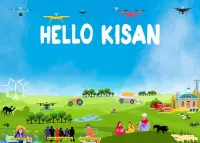10.1 What Will You Improve Next
Once your first few months go smoothly, you’ll start thinking — “Ab next kya?”
That’s the beauty of this business — every batch teaches you something new.
• Learn how different foods behave: mango pulp dries faster, onion slower, spinach delicate.
• Experiment with temperature and time — develop your own “signature recipe.”
• Improve packaging — airtight jars, kraft pouches, QR-coded labels.
• Add a small weighing scale with auto pricing — gives a professional feel.
💬 Example:
In Ajmer, Rekha Soni started with drying mint and chillies. Within a year she made her own “Drying Chart” for 30 items. Now she trains new entrants — they call her Madam Rekha Food Tech Expert!
________________________________________
10.2 Skill You Need to Learn
This business doesn’t need degrees — only curiosity and discipline. Still, learning adds polish and power.
• Food Preservation Basics: Moisture, hygiene, packaging — available free on YouTube and PM-FME portal.
• Digital Basics: Using WhatsApp Business, clicking good product photos, updating your SNL profile.
• Financial Basics: Simple Excel sheet or diary for daily cost vs income tracking.
• Customer Communication: Short polite messages, keeping order promises.
💬 Example:
Faisal from Lucknow learnt Canva on his phone. Now his pouches look like store brands. Customers think he’s running a full factory — but it’s just one machine in his backyard!
________________________________________
10.3 Future Product or Market Expansion
This business can grow in dozens of directions without needing big money.
• A. Add New Products: Dried soups, ready meal mixes, herbal teas, pet food, flower petals for rituals.
• B. New Markets: Supply to hostel canteens, religious trusts, trekking clubs, and online stores.
• C. Export Potential: NRIs crave authentic Indian taste — dried poha, pav-bhaji mix, masala bhindi.
• D. Processing Clusters: A few micro-entrepreneurs in one area can share packaging and transport.
💬 Example:
In Coimbatore, Three Friends Drying Co. began as one woman’s side gig. Now they have four machines, three families involved, and they export dried jackfruit chips to Singapore.
________________________________________
10.4 Simple 1-Year Growth Plan
| Month Range | Focus Area | Expected Milestone |
| Months 1–3 | Learning & Local Drying Jobs | 20 Regular Customers + Stable Batches |
| Months 4–6 | Join SNL Network + Contract Jobs | Orders from other areas begin |
| Months 7–9 | Packaging Upgrade + Brand Tag | Launch your own label |
| Months 10–12 | Scale or Branch Out | Add one more unit or train a friend |
💬 Example:
Anjali & Aruna Sisters from Surat started one unit under PM-FME. In month 11, they helped their cousin in Baroda buy another dryer. Now all three work together — one buys, one dries, one packs — earning ₹ 1 lakh+ per month combined.
________________________________________
10.5 Why This Business Has a Secure Future
• Food Never Goes Out of Fashion. Only the way we preserve it changes.
• Technology Keeps Improving, Not Disrupting. Your dryer will get smarter with IoT updates — not outdated.
• Government Support Is Strong. Food-processing, waste-reduction, and women-enterprise are priority areas in every scheme.
• Lifestyle Trends Help. Working couples, travel eaters, health freaks — all prefer convenient dried foods.
💬 Example:
Mohanlal Ji from Udaipur, 68, once called this a “time-pass.” Two years later, he’s been invited by a local college to speak on “Micro Food Enterprises & Sustainability.” That’s not just income — that’s recognition.
________________________________________
💬 In Simple Words
This business grows like a family tree — one branch at home, one with a friend, another with your relative — all connected by trust and technology.
There is no saturation point because every city, every season, every kitchen keeps producing food that deserves to be saved, not wasted.
💚 “Sikhte chalo, sukhate chalo — earning bhi, learning bhi.”




